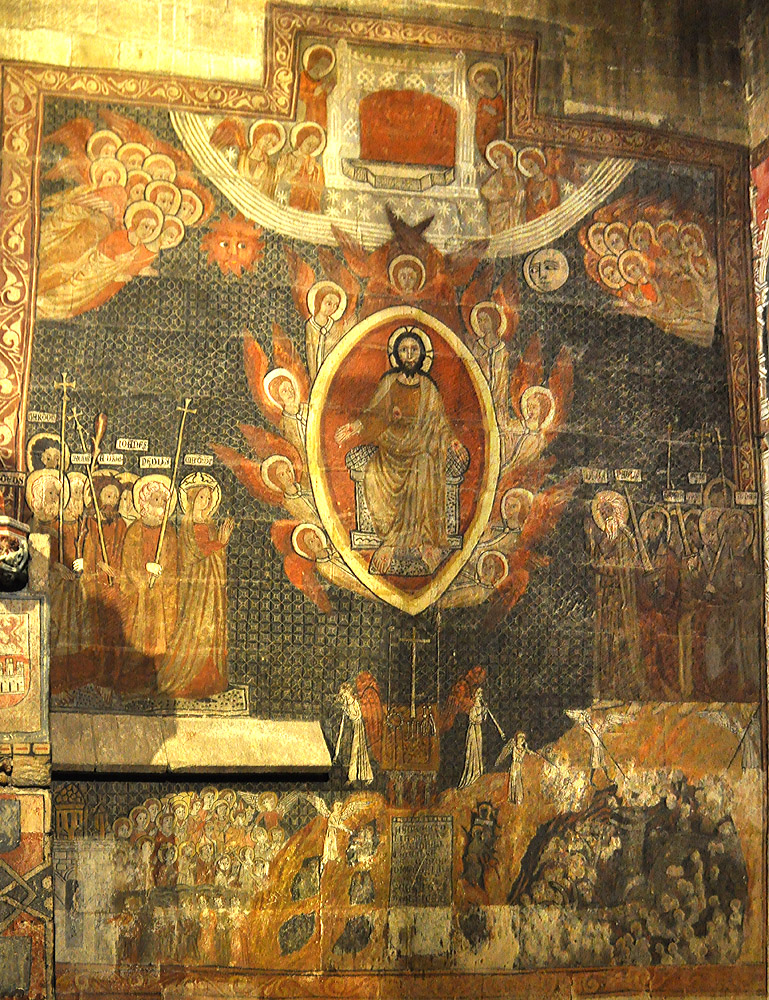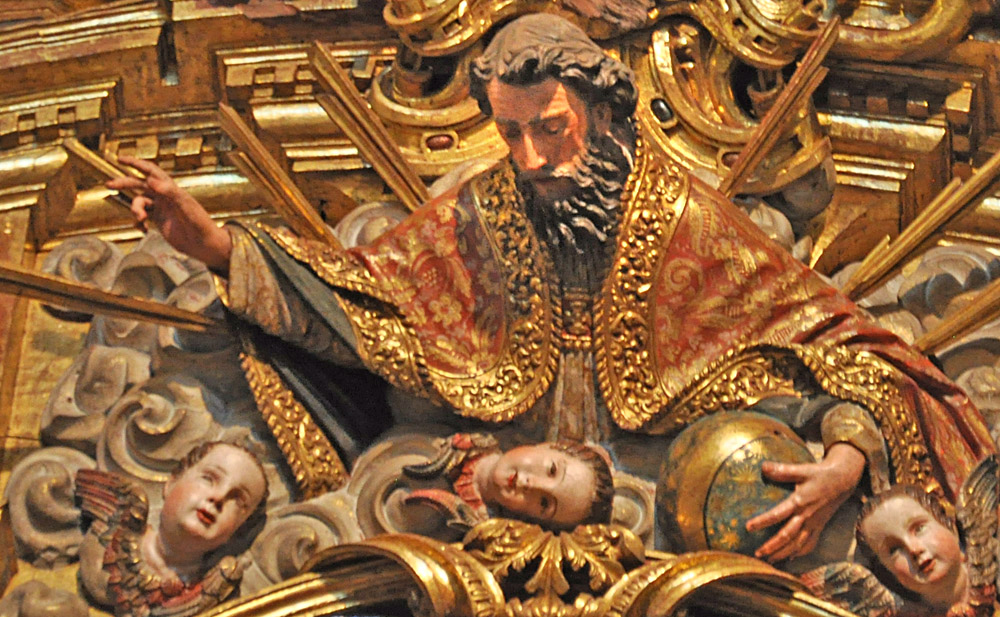To deal with the episodes in scripture where the Father intervenes in human affairs, this early art adopts two main strategies. The first is to symbolize the Father with a hand reaching down from Heaven, as is seen in images of the sacrifice of Isaac, the giving of the decalogue to Moses, and the baptism of Jesus. In the apse mosaic at the old St. Peter's Basilica in Rome (4th century), a small hand reaches down from the upper region to bless the enthroned Christ.2 In medieval images of the Annunciation, too, the action of the Father will sometimes be represented by a hand pointing at Mary from the upper margin (example). In modern times the hand symbol continues in various narrative images from scripture (example) and as a symbol in abstract compostions (example).
The second strategy is to picture the Son doing things that Genesis 1-3 simply says are done by "God." In the sarcophagi of the 4th century, it is the Son who is pictured dealing with Adam and Eve (example). And in creation images well into the Middle Ages, the creator is a youthful Son (example). This usage is consistent not only with the Son's being "the image of the invisible God" but also with the Nicene Creed of 325, which speaks of Christ "by whom all things were made."3
Beginning in the 14th century, however, it became more and more acceptable in the West to picture the Father as an old person with a beard in the various subject types discussed above (example). The beard is often white (example), but not always. Late- and post-medieval altarpieces and other large compositions sometimes place a portrait at the top, presiding over the persons or events below. The picture at the top of this page is an example. In that portrait and many others he holds a mappa mundi, a banded sphere representing the earth. Instead of a round halo, he will often have a triangular nimbus (example).
Prepared in 2018 by Richard Stracke, Emeritus Professor of English, Augusta University.
HOME PAGE
The summit of the Immaculate Conception Retable at the Cathedral of St. Savior, Oviedo, Spain. Follow this link for the description page.
ANOTHER IMAGE:

This 14th-century fresco uses an empty throne to represent the Father. (See the description page.)
MORE IMAGES
- 1750: In the margin of a Mexican nun's badge of the Annunciation.
- 1758: This medallion in Trogir Cathedral is known as "the bust of the Creation."
ALSO SEE
NOTES
1 "Image of the invisible God" – Colossians 1:15. "Father unseen" – Matthew 11:27, John 6:46, John 14:6, Isaiah 40:18.
2 Catholic Encyclopedia, s.v. "Veneration of Images."
3 The Nicene Creed, in Schaff.
